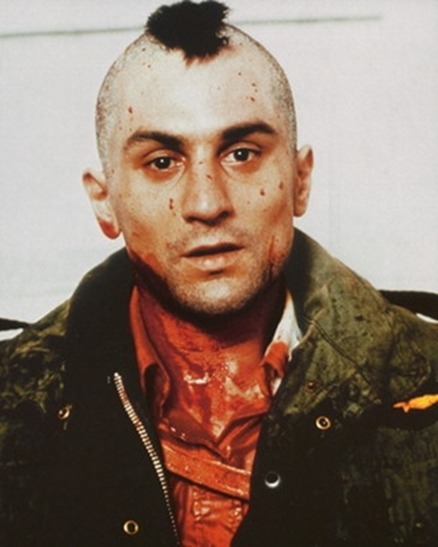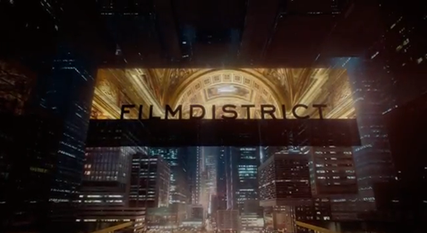The genre I have chosen for my
trailer work is psychological thriller – a genre generally associated with
directors such as Alfred Hitchcock and Christopher Nolan that has been very
prominent in the 21st century with films like Memento, Moon and The
Prestige. These kinds of films generally rely on mystery and suspense rather
than action set pieces, and I have found that as a result, the trailers are
generally more taut than exhilarating and are often story/character based.
A common convention of
psychological thrillers is mentally unstable characters, who provide the
‘psychological’ aspects of the genre. Sometimes, these characters are villains
who are insane or sociopathic, for example in No Country For Old Men, though
many psychological thrillers also feature mentally troubled main characters who
can range from characters with mental conditions such as amnesia and
anterograde amnesia (The Bourne films and Memento respectively) to straight out
psychopaths (American Psycho). Most thriller trailers of this genre go a long
way to demonstrate the psychological themes and psychologically troubled
characters – for example, the first thing the trailer for No Country For Old
Men does is establish the character of psychopathic killer Anton Chigurgh in
one of his iconic moments, when he tosses a coin to determine whether or not he
will kill someone. Memento particularly cleverly demonstrates the psychological
condition of the main character, which is anterograde amnesia meaning that he
cannot make new memories: the main character is seen having a conversation with
someone about his condition, and at the end of the trailer he is seen having
the same conversation with the same person before saying ‘I’ve told you this
before, haven’t I?’ This is the kind of psychological trickery I would like to
include in my trailer, as it adds depth to the story and makes you think, as
well as being a slightly comedic beat.

The way most psychological
thrillers build suspense is by introducing characters and ideas that are not to
be trusted. Inception, an action thriller with strong psychological elements,
lets the audience decide for themselves which parts of the film were actually
‘real’. Other thrillers in this style often have morally dubious, untrustworthy
or unstable characters, for example the character of Travis Bickle in Taxi
Driver – this character is an iconic example of an anti-hero in cinema. Zodiac,
based on a true story, also introduces several different characters in the hunt
to catch a killer though they are consumed by their obsessions and fail to
catch the zodiac killer as a result.

Most psychological thrillers also
have male protagonists and explore the minds of men, and in the vein of these
films I would make my main character male. Drive, for example, is based around
a fairly understated crime story though it can be said to have psychological
aspects as the second half of the film begins to explore the psychotically
violent nature of a seemingly mild-mannered protagonist. The trailer as a
result accentuates the different and often dangerous aspects of the male
protagonist’s mind: he is shown violently assaulting and beating a man in an
elevator while the music that plays is calm and classical, which draws
attention to the shocking violence portrayed. At the end of the trailer, he is
shown in one shot walking a woman and child to their apartment out of
compassion set to the same classical music, though in the next shot the music
cuts out abruptly as the character suddenly shoots a man down. In this way, the
trailer juxtaposes the different aspects of the main character that are
introduced at different points in the film in no more than five seconds and I
take the view that my trailer would benefit from this shock factor and the
demonstration of the character’s psyche.

The style of many psychological
thrillers is often understated – most of them do not have particularly dramatic
music or visuals (though that is not to say that these two components of
filmmaking are unimportant to thrillers of this style). In comparison to
trailers for more action and horror based thrillers such as Prometheus, which
has an intense combination of dramatic visuals and ominous music, psychological
thriller trailers are fairly quiet – for example, the trailer for No Country
For Old Men has little to no music and is mainly based around dialogue and
presenting scenes of tension. The trailer for A History of Violence, another
highly psychological thriller, uses sound effects to accentuate the tension and
drama. Moon, meanwhile, uses calm piano music from the film’s score to present
the daily life of the main character, while the most dramatic parts of the
trailer are notable for an absence of music – at one point, when the main
character comes across a clone of himself, the music abruptly and dramatically
cuts out. Some psychological thrillers, and in particular the trailers for
them, are highly stylized. The trailer
for The Master, for example, uses percussive and unconventional music, as well
as having drawn out, slow paced camera shots such as one of Joaquin Phoenix
following a car by a river and one of him walking across a street in a suit.
This style creates tension simply because it is unexpected for a film trailer –
most modern trailers are fast paced and build up to a finish by using
increasingly dramatic music and visuals – this, however, layers lines of
dialogue on top of one another which is a more unconventional way of adding
drama to the story and is far more psychological, given that the dialogue
itself relates to the psychological condition of the main character who is seen
walking down the street while all of this is happening.

Most psychological thrillers I
have seen often have complex and intricate plot lines – some feature plot
twists (e.g. Fight Club) while others will have nonlinear plotlines: the main
story of Memento, for example, is told in reverse chronology, while The
Prestige unfolds in random order. As a result, trailers for psychological
thrillers have quite a lot of storytelling to do in order to give the audience
an idea of what the film will be like. Many trailers I have viewed can be split
in to segments which are distinguished from one another by, for example, the
use of music cues and fades to black. The trailer for Fight Club, for example,
uses five or six different bits of music to describe the different plot ideas
that come in to play. The voiceovers of Edward Norton’s character also mean exposition
can be given to the story within the 2 minute trailer – he introduces different
characters, often at the end and beginning of one of the ‘segments’ of the
trailer – for example, the character of Tyler Durden is introduced when the
narrator states ‘I longed for a different life… and this is how I met Tyler
Durden’. This is when the music changes to become more dramatic. In this way,
the film manages to emphasize certain plot points through stylistics rather
than telling too much of the story, which is a highly effective method of
putting together a trailer for a psychological thriller.

The structure of the trailer for
Memento is also particularly clever, as it introduces the concept that the film
is based on by using the different characters that the main character, Leonard
Shelby, comes in to contact with throughout the course of the film. For
example, he meets a character named Teddy who is first through a title card
that states ‘friend’, though another appearance of him in a trailer is preceded
by a title card stating ‘liar’, demonstrating the dubious nature of Leonard’s
memories of the people he has met and the things he has done, a theme that is
important later on in the film. Unlike the trailer for Fight Club, this trailer
uses similar music cues and never modulates in tone: the distinction between
these two trailers is, as a result, that Fight Club develops the themes and
characters by suggesting different aspects of the story, while Memento does the
same by introducing the basic plot concept.
A graphic from the Memento trailer
The psychological thriller genre
is often based on complexity and intricate storylines – both the characters and
plot present within them are often multi-layered and particularly dark. As a
result, these types of films are often thought provoking and stylized in ways
that make the audience ask questions as well as draw out both emotive responses
from them.




























